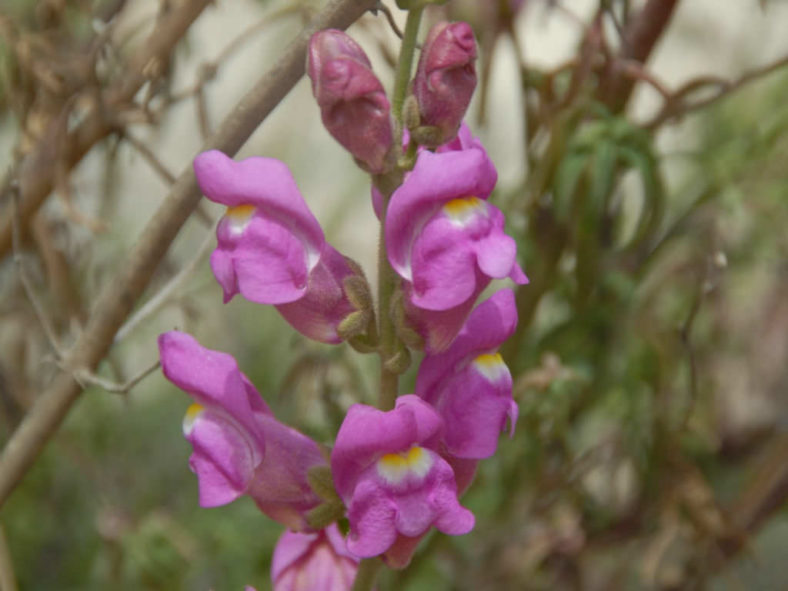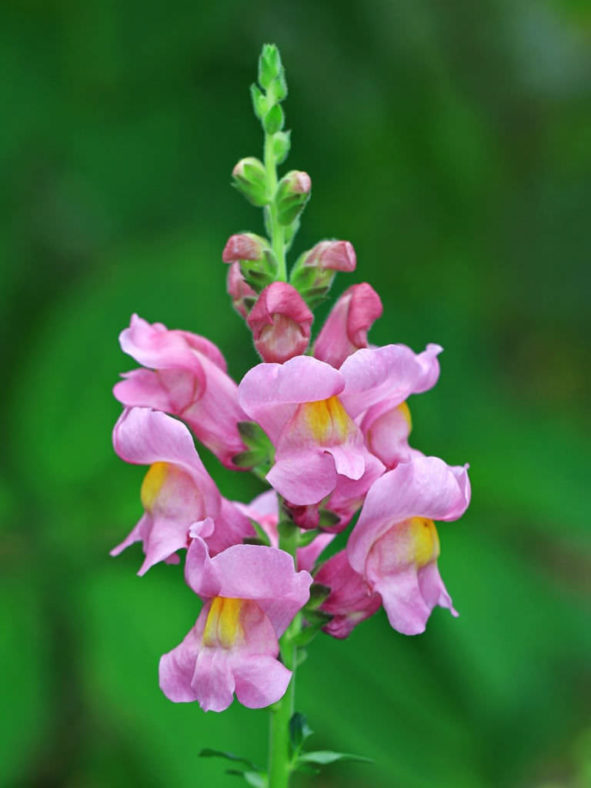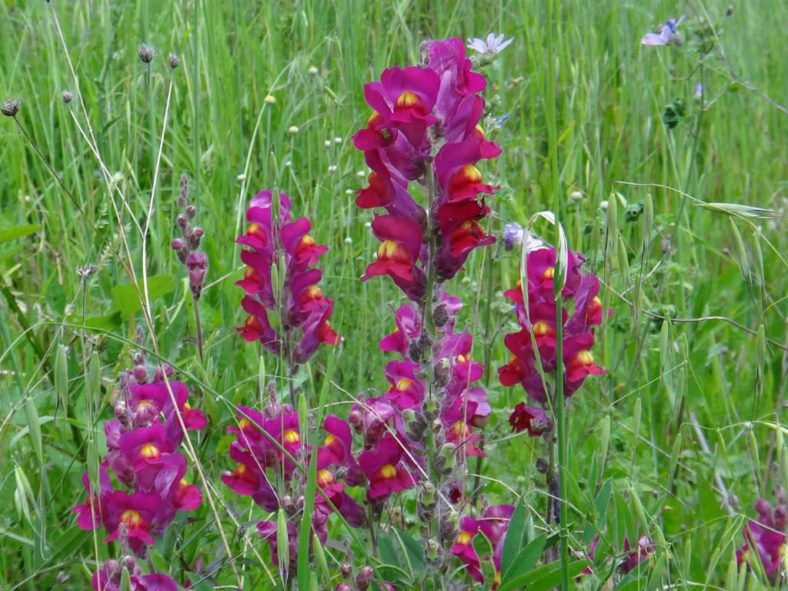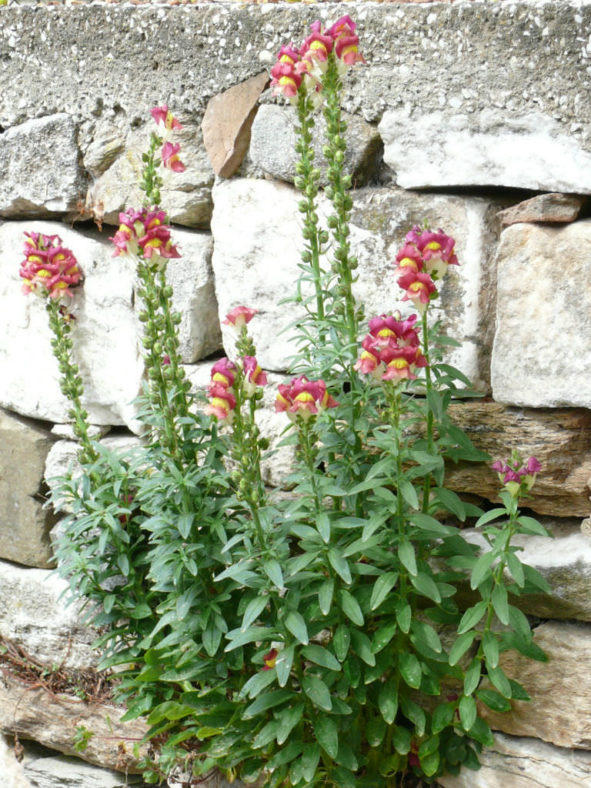Scientific Name
Antirrhinum majus L.
Common Name(s)
Snapdragon, Common Snapdragon, Garden Snapdragon
Synonym(s)
Antirrhinum grandiflorum, Antirrhinum hispanorum, Antirrhinum latifolium subsp. latifolium, Antirrhinum murale, Antirrhinum vulgare, Orontium majus, Termontis racemosa
Scientific Classification
Family: Plantaginaceae
Tribe: Antirrhineae
Genus: Antirrhinum
Origin
Antirrhinum majus is native to the Mediterranean region, from Morocco and Portugal north to southern France and east to Turkey and Syria.
Flower
Color: Pink to purple
Bloom Time: Midsummer to early fall
Description
Antirrhinum majus is an herbaceous perennial plant that grows up to 3.3 feet (1 m) tall. Leaves are spirally arranged, broadly lanceolate, up to 3 inches (7.5 cm) long, and up to 1 inch (2.5 cm) wide.
The flowers are pink to purple, often with yellow lips, and produced on a tall spike. They are up to 1.8 inches (4.5 cm) long, zygomorphic, with two "lips" closing the corolla tube. Fruits are ovoid capsules, up to 0.6 inches (1.5 cm) in diameter, containing numerous tiny seeds.

Hardiness
USDA hardiness zone 7a to 11b: from 0 °F (−17.8 °C) to 50 °F (+10 °C).
How to Grow and Care
Snapdragons will bloom most profusely in full sun to partial shade in the spring. Once the temperature heats up, they may stop blooming altogether. Planting them in partial shade and keeping them well watered will help them make it through the summer to begin blooming again in fall.
Regular deadheading will keep your Snapdragons blooming longer. They won't need much care early in spring, but mulching to keep the soil cool and moist can help them handle summer better.
Some taller varieties will need staking unless they are planted close enough to other plants to lean on them.
Snapdragons are tender perennials and may die off in colder climates. If they survive the winter, prune them back by about 1/3 to encourage new growth. Don't be too disappointed if they don't last long. Snapdragons tend to go downhill after their first year, and it's best to start fresh every year. Many varieties will self-seed and come back on their own, although they won't always look like the original plants you planted. See more at: How to Grow and Care for Snapdragons.
Links
- Back to genus Antirrhinum
- Plantpedia: Browse flowering plants by Scientific Name, Common Name, Genus, Family, USDA Hardiness Zone, or Origin
Photo Gallery
Click on a photo to see a larger version.




